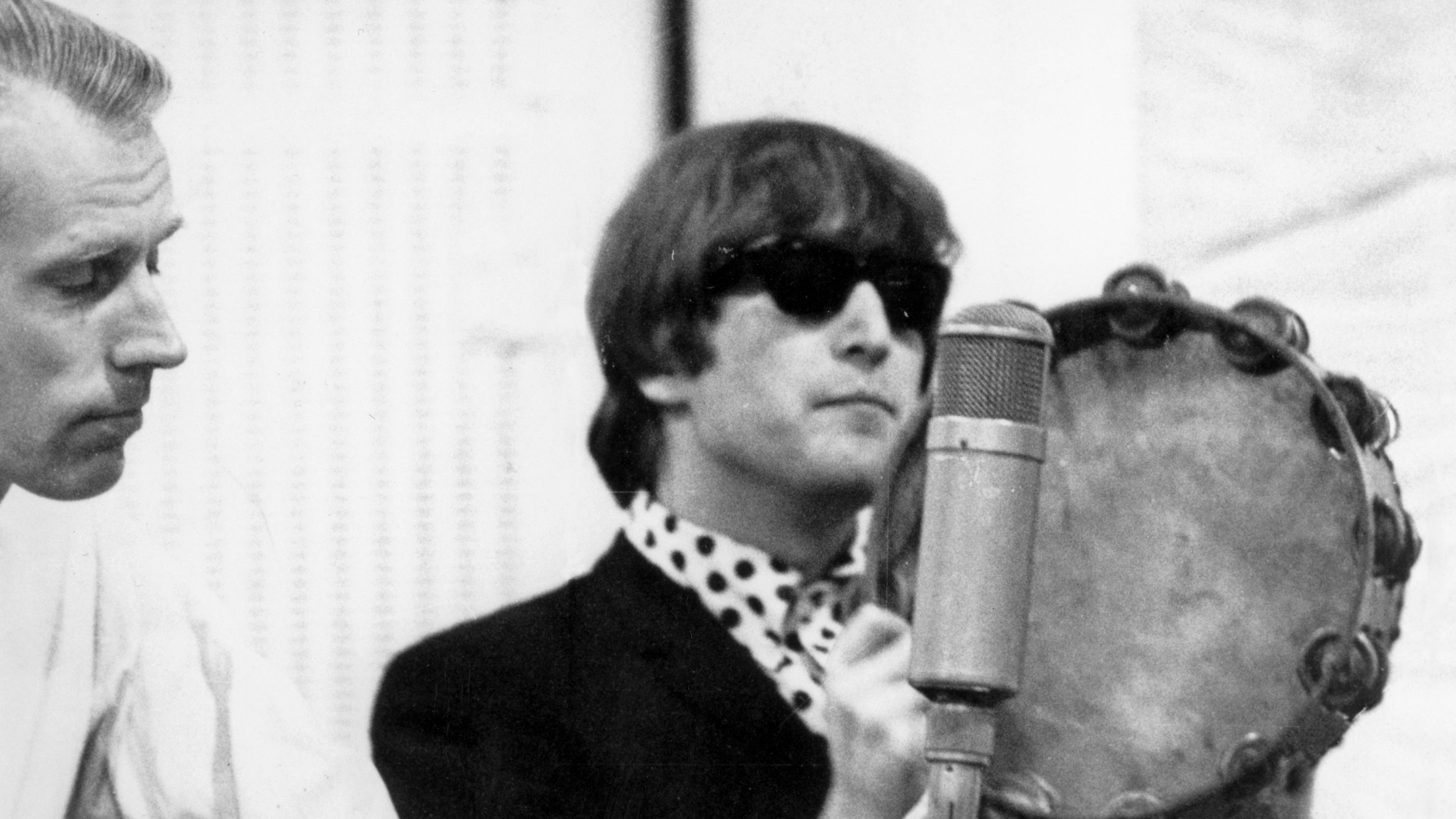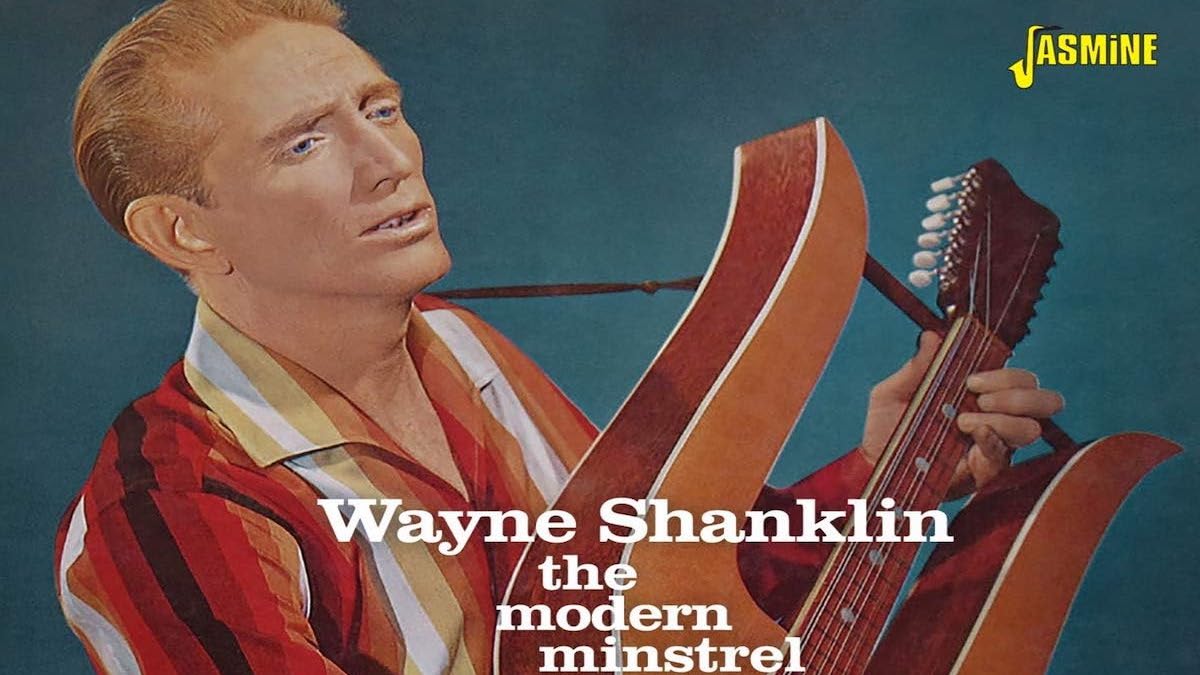
It's the jet plane effect, the comb filter effect, the tape phasing effect, or according to George Martin, an effect created by splitting a signal through a "double vibrocated sploshing flange with double negative feedback".
He was joking, but today we have the flange effect, so was a flippant remark by Martin responsible for the name of an effect that comes with every DAW and features in so many guitar pedals? Let's break it down and find out who should really take the flanging plaudits.
Phase 1: The Beatles invent flanging?
"I want my voice to sound like the Dalai Lama chanting from a mountaintop, miles away"
John Lennon
George Martin was the classically trained producer at Abbey Road who helped realise all of the Beatles ideas and get them down on some of the most iconic recordings ever made. If nothing else, he and The Beatles must be credited with cutting edge techniques in multi-track recording, tape reversing and looping, and the use of many other effects, but did they invent flanging?
Their innovative recording techniques reached something of a peak for the album Revolver and track Tomorrow Never Knows, a song that is now regarded as one of the all-time cutting edge recordings, and one that has influenced everything from psychedelia to dance music. In the book Here, There and Everywhere by Geoff Emerick and Howard Massey, Emerick, who was the engineer on Revolver, explains how part of the vocal on the track was put together.
"My ears perked up when I heard John’s final direction to George: '… and I want my voice to sound like the Dalai Lama chanting from a mountaintop, miles away.' George Martin looked over at me with a nod as he reassured John. 'Got it. I’m sure Geoff and I will come up with something.'”
Emerick mentally worked through all the gear they had at Abbey Road to see if he thought any of it could get close to sounding like the Dalai Lama on a mountain. He eventually decided that the Leslie speaker system in the studio's Hammond organ might hold the answer. This spinning two-speaker system is responsible for the famous Hammond vibrato style effect.
“In my mind, I could almost hear what John’s voice might sound like if it were coming from a Leslie," Emerick notes in the book. “Less than half an hour later, Ken Townsend, our maintenance engineer, had the required wiring completed.”
They placed two microphones near the Leslie cabinet and John recorded the famous 'turn off your mind, relax and float down stream…' vocal.
However, as much as this effect could be confused with flanging, it's more of a lo-fi radio-style vocal. But flanging does result from another technique used on Tomorrow Never Knows.
The Leslie effect on the track was only used on Lennon's vocal on the second half of the song (after the backwards guitar solo). The first three verses ended up being recorded with artificial double tracking, and again, Ken Townsend gets the credit here.
In response to the fairly laborious process of recording a set of vocals twice to give a fuller effect – and something that Lennon hated doing – Townsend had the idea of recording two identical vocals together, with one slightly delayed through a second tape machine. This effect was called artificial double tracking or ADT and would result in a fuller end result.

This was again employed on Tomorrow Never Knows – on the first three verses – and across other Beatles recordings. However, it could also introduce phasing and flanging effects if the speed of one machine was altered slightly.
The story goes that Lennon loved the effect so much he wanted to know how it was created and Martin, knowing the explanation would go over John's head, replied, "we take the original image and split it through a double vibrocated sploshing flange with double negative feedback." Lennon realised Martin was joking but would call for 'Ken's flanger' whenever he wanted the ADT effect.
So the Beatles (and especially Ken Townsend) invented flanging, right? Not quite, there is a second option.
Phase 2: The Big Hurt by Miss Toni Fisher
"Wayne comes in and says 'I want to try something and that is to double her voice and the way to do that is to make a copy of this tape and play both tapes simultaneously'."
Larry Levine
This 1959 hit was produced and written by Wayne Shanklin, and as you can hear the flanging in this track is very pronounced throughout. It was recorded at Gold Star Studios, which had an innovative (for the time) 2-track tape machine.
Larry Levine and Stan Ross were the engineers in the studio and decided to put Fisher's vocal on one track and the musicians on the other. However, Shanklin insisted on keeping the recording of both on one track as a mono recording. He then chose a particular take (number 16, fact fans) of the recording as the final take, deciding it was the perfect recording of both the vocal and orchestra. However, as it turned out, the vocal was too low in the mix.
With a vocal that needed something extra, and the musicians and Toni Fisher not available for a re-recording, the team had to do something innovative. In a 1988 interview with Art Fein, Larry Levine and Stan Ross explained what happened next and how their version of flanging came about.
Larry: "Wayne comes in and says 'I want to try something and that is to double her voice and the way to do that is to make a copy of this tape and play both tapes simultaneously'."
Larry was dubious, replying that the music would also be doubled and that there was no way to keep the tapes in sync.
Meanwhile Wayne is falling on the floor saying 'That's the greatest thing I ever heard!
Larry Levine
"But he insisted I try it," Larry said of Wayne. "So I made a tape copy and tried to start the two together and after maybe the second or third attempt I was lucky enough to start them together. They ran together for a while and coming into the bridge was when they first went out of phase so the sound went up and came back down again. I said 'see I told you it wouldn't work!'
"Meanwhile Wayne is falling on the floor saying 'That's the greatest thing I ever heard! That's great, we have to use it, can you make it happen in different places?' I figured out which tape was traveling faster, went back to the beginning and started it a little behind the other. I ended up making it phase in about five places and edited them together."
This is probably as close and as early an example of 'modern' flanging as we will hear. Or is it? In the story of flanging there is one further claimant, and they go back even further.
Phase 3: The Les Paul Flanger
"[The song] Lover was the first recording where I attempted to combine all my inventions and where I played all of the instruments."
Les Paul
Not content with being an electric guitar pioneer, Les Paul was also an inventor and recording expert, starting out by coming up a simple harmonica holder, so he could play that and the guitar simultaneously, and is now credited with everything from audio effects to sound on sound recording.
This latter technique is basically multitrack recording. Paul built his own cutting machine to record onto acetate discs and later moved onto tape with one of the very first reel-to-reel machines, gifted to him by Bing Crosby.
On www.les-paul.com, he said of the gift: "I had no idea what he was up to until he raised the lid (of his Cadillac), and there was one of the first Ampex model 300 tape machines. Bing said, 'this is yours for what you’ve done for me'."
In his autobiography, Les Paul: In His Own Words he described a typical 'sound on sound' recording process.
"You'd lay down your first track down on a disc then play something along with it while you use the second machine to record the combined sound on the second disc. Then you'd take that two-layered disc, move it over to the playback machine and repeat the process, adding the third layer, the fourth layer and so on. [The song] Lover was the first recording where I attempted to combine all my inventions and where I played all of the instruments."
Not surprisingly, Les Paul experimented with effects too, and is said to have come up with phasing in the 1940s and 50s when he mixed two acetates together on variable speed record players. (By this account, then, he kind of came up with DJ-ing but let's not muddy the waters further.)
The earliest proof of this comes on the 1952 track Mammy's Boogie, above. It has to be said that the effect is subtle, and nowhere near the dramatic jet-style flanging that we are used to today. So who can we credit with as the inventor of modern day flanging?
Flange Wars: The Winner
Before we decide who deserves the accolade for the invention of flanging, it must be noted that all three of our contenders could quite easily have thought they came up with the technique without knowing the others had. And it must also be said that as soon as the concept of multi-track recording was invented, flanging was sure to follow whether intended or by accident.
Les Paul very probably deserves praise for being the first person to come up with the process with his acetate mixing. However his use was very subtle and not fully fleshed out and made into a dramatic effect – especially one used in guitars – until much later.
George Martin and The Beatles certainly invented a lot, as did their wonderful engineer Ken Townsend. We'll give them the Leslie recording technique, tape manipulation and whatever other recording plaudits you want to throw at them, but our inventor of flanging award goes elsewhere.
If we are to specify 'modern flanging' as a dramatic effect, there is only one person who actually suggested trying something totally new and realised he'd created something new, albeit totally by accident. Lades and gentlemen, we give you Mr Wayne Shanklin the (possible) inventor of modern flanging (and a modern minstrel).
Until the next one comes along that is…








